Curse Of The Scottish Fyvie Castle That Survived Generations
A. Sutherland - AncientPages.com - This castle is located about 30 miles (50 km) northwest of Aberdeen, Scotland, and is known as the Fyvie Castle. It’s an ancient structure because its foundations were laid before the Norman Conquest in 1066. Since the 14th century, only five prominent families have owned this haunted building.
An individual known as Thomas the Rhymer (c. 1220 – 1298) is related to the Castle, but he is shrouded in myths, legends, and superstition. According to Peter of Langtoft’s early 14th century ‘Chronicle,’ Thomas was a poet who foretold prophecies.
His prophecies foretold only unfortunate events, disasters, confusion, and bloodshed. He traveled much and visited many landowners, but he was never welcomed.
Thomas’ inevitable visit was also awaited in the Fyvie Castle, according to James Murray, the 19th-century editor of the five ancient manuscripts.
Prophecy Of Thomas And Weeping Stones
When Thomas finally appeared before the front of the Castle, his arrival was accompanied by a violent storm, wind, and rain that surrounding trees lost all their leaves, and the massive gates of the Castle slammed shut with a bang. While the violent storm was raging on all sides, there was one place close to where Thomas stood, and strangely, in this place, there was no wind to shake a pile of grass or his hair!
Irritated that the Castle’s gates should have slammed shut directly in his face, Thomas uttered mostly ill-omened curses related to the three mysterious ‘weeping stones.’
The stones had been initially taken from a nearby property belonging to the church, and therefore, they would act as evil omens to Fyvie Castle as long as they remained part of the building.
Unfortunately, all attempts to find the stones failed. Only one has been found and is now kept in the Castle. It stands in a wooden bowl in the charter room of the Castle. Usually, the vessel is dry, but sometimes it strangely fills with water. The whereabouts of two other stones are unknown; therefore, the curse remains.
According to Thomas the Rhymer’s bizarre prophecy (or curse) – ‘no heir would ever be born in the Fyvie Castle, and as records confirm, it has been true since 1433. Besides, the Castle would never pass from a father to his eldest son.
Indeed, among the Forbes-Leith family, who was the last private owner of the Fyvie, no first-born survived to inherit it!
Since 1984, Fyvie Castle has been in the hands of the National Trust of Scotland.
But before it happened, the residents of the old Scottish Fyvie Castle were plagued by terrible noises and unexplained happenings.
A Puzzling Inscription With No Rational Explanation
The puzzle, which dates from the night of October 27, 1601, has so far defied any rational explanation.
In 1592, Alexander Seton, 1st Earl of Dunfermline, married Dame Lilies (or Lilias) Drummond, a daughter of Lord Patrick Drummond, another noble related to the ruling house of Stuart. Dame Lilies was a handsome woman, and for nine years, she and her husband were very happy together.
They had five daughters, four of whom survived to marry influential noblemen. However, Lilies was not as strong as her appearance suggested, and on May 8, 1601. She died (only 30) at her husband’s house in Fife, in eastern Scotland, and was buried there.
Her husband married his new woman – Lady Grizel Leslie – only six months after the death of his wife, Lilies.
The Bizarre Story Does Not End Here
On October 27, the married couple occupied their temporary bedroom at the top of the spiral staircase in the older part of the Castle because their new quarters in the so-called Seton Tower were under construction.
 All letters of this inscription are still recognizable.
All letters of this inscription are still recognizable.
That night they could not sleep because of heavy noises outside their bedroom. Seton decided to investigate but did not find anything unusual until dawn when he and his servant discovered an inscription with the name ‘D. Lilies Drummond’ carved upside down on the window sill, with ca.7 centimeters high letters. The note, apparently made recently, was placed more than 50 feet (15 meters) above the ground on the old defensive wall of the Castle.
The mystery of the text was never solved. People put forward various suggestions but in vain. Additionally, the precision of the carved inscription ruled out any prank of the members of his household.
The Inscription Is Not An Illusion - It Is Still Recognized Today
And why was the name of his first wife written upside down?
Perhaps one of Seton’s masons carved the inscription because of respect for the dead Lilies Drummond? If so, why was it necessary to do it upside down?
To carve text on the window sill, it would be necessary to erect scaffolding. However, it would also take a lot of time, and one night did not give enough time to do it. Moreover, the Seton couple did not hear hammer noises but only – deep sighs.
The inscription introduced other strange incidents in the Fyvie Castle. The 17th-century records mention a luminous ‘Green Lady’ who was believed to be Dame Lilies, but a portrait of Lilies, dated 1676 that hangs in the Castle, does not match the description of the ghost seen in the Castle.
Colonel Cosmo Gordon was the fifth owner of the Fyvie and took over the Castle in 1733, and the green apparition was seen many times; the Gordons considered her a death omen. On one occasion, when Cosmo was in bed, he was terrified by unseen hands, and another time, a strong wind suddenly appeared inside the Castle and blew the bedclothes off him and other bedrooms occupied by his guests. All outside was surprisingly quiet.
Just before Colonel Gordon’s death, the apparition appeared in his room, and he believed it was an omen of his death. He was right because a few days later, his younger brother saw the same apparition and bent the knee as a gesture of respect.
The following gloomy December morning, Cosmo Gordon died.
Yet another owner of the Fyvie was Lord Leith, who bought and investigated diverse phenomena related to the Castle in 1889 and died in 1925. Leith examined the weeping stone, a porous sandstone that absorbed humidity. Still, he could not explain the mysterious carving or frequent apparition of the ‘Green Lady.’
Lord Leith’s motto was remarkable:
“Never combat the supernatural and meet it without fear; it will not trouble you.”
Written by – A. Sutherland - AncientPages.com Senior Staff Writer
Updated on August 7, 2022
Copyright © AncientPages.com All rights reserved. This material may not be published, broadcast, rewritten or redistributed in whole or part without the express written permission of AncientPages.com
More From Ancient Pages
-
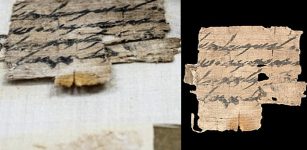 Unique 2700-Year-Old Papyrus With Inscription In Paleo-Hebrew Acquired By Israel From U.S
Archaeology | Sep 7, 2022
Unique 2700-Year-Old Papyrus With Inscription In Paleo-Hebrew Acquired By Israel From U.S
Archaeology | Sep 7, 2022 -
 Spartacus: The Rise And Fall Of An Unlikely Hero
Featured Stories | Oct 4, 2022
Spartacus: The Rise And Fall Of An Unlikely Hero
Featured Stories | Oct 4, 2022 -
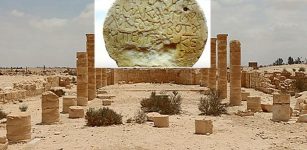 Tombstone With Ancient Greek Inscription Unearthed Near Nitzana In The Negev, Israel
Archaeology | Jan 8, 2021
Tombstone With Ancient Greek Inscription Unearthed Near Nitzana In The Negev, Israel
Archaeology | Jan 8, 2021 -
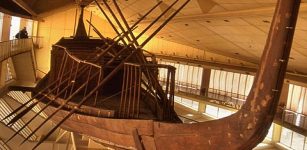 Khufu Boat And Unique Boat-Building Technique Of Ancient Egyptians
Artifacts | Jun 20, 2017
Khufu Boat And Unique Boat-Building Technique Of Ancient Egyptians
Artifacts | Jun 20, 2017 -
 Legend Of Tarenyawagon Who Came From The Heavens And Ascended To The Stars In His Fast Flying Shining Canoe
Featured Stories | Feb 25, 2019
Legend Of Tarenyawagon Who Came From The Heavens And Ascended To The Stars In His Fast Flying Shining Canoe
Featured Stories | Feb 25, 2019 -
 Evolution Might Stop Humans From Solving Climate Change – Researchers Say
Evolution | Jan 3, 2024
Evolution Might Stop Humans From Solving Climate Change – Researchers Say
Evolution | Jan 3, 2024 -
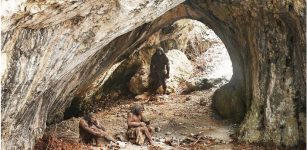 Ancient Secrets Of Polish Ciemna Cave Inhabited By Humans 120,000 Years Ago
Featured Stories | Nov 22, 2016
Ancient Secrets Of Polish Ciemna Cave Inhabited By Humans 120,000 Years Ago
Featured Stories | Nov 22, 2016 -
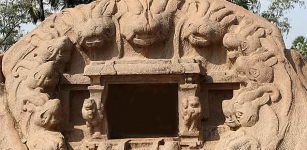 Tiger Cave: Rock-Cut Hindu Temple Complex Dated To East India’s Pallava Empire
Featured Stories | Jan 19, 2017
Tiger Cave: Rock-Cut Hindu Temple Complex Dated To East India’s Pallava Empire
Featured Stories | Jan 19, 2017 -
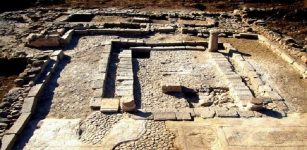 2,000-Year-Old Ruins In Mary Magdalene’s Town Of Magdala On The Shore Of The Sea Of Galilee
Biblical Mysteries | Dec 26, 2014
2,000-Year-Old Ruins In Mary Magdalene’s Town Of Magdala On The Shore Of The Sea Of Galilee
Biblical Mysteries | Dec 26, 2014 -
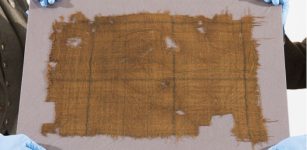 Scotland’s Oldest Tartan On Display For The First Time!
Artifacts | Apr 6, 2023
Scotland’s Oldest Tartan On Display For The First Time!
Artifacts | Apr 6, 2023 -
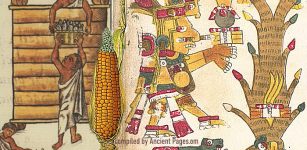 Centeotl: Lord Of Maize Who Was Revered Before The Olmecs By All Mesoamerica’s Inhabitants
Featured Stories | Feb 20, 2024
Centeotl: Lord Of Maize Who Was Revered Before The Olmecs By All Mesoamerica’s Inhabitants
Featured Stories | Feb 20, 2024 -
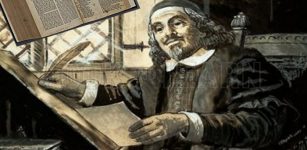 On This Day In History: Coverdale Bible Printed In English For The First Time – On Oct 4, 1535
News | Oct 4, 2016
On This Day In History: Coverdale Bible Printed In English For The First Time – On Oct 4, 1535
News | Oct 4, 2016 -
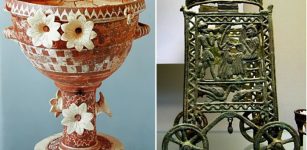 Minoans: Highly Advanced Bronze Age Civilization Of Europe
Featured Stories | Sep 23, 2023
Minoans: Highly Advanced Bronze Age Civilization Of Europe
Featured Stories | Sep 23, 2023 -
 Large 4,000-Year-Old Sumerian Port Discovered In The Desert In Iraq
Archaeology | Apr 4, 2018
Large 4,000-Year-Old Sumerian Port Discovered In The Desert In Iraq
Archaeology | Apr 4, 2018 -
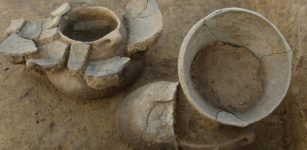 New DNA Study Links Early Europeans’ Cultural And Genetic Development Over Several Thousand Years
Archaeology | Aug 9, 2023
New DNA Study Links Early Europeans’ Cultural And Genetic Development Over Several Thousand Years
Archaeology | Aug 9, 2023 -
 Unusual Secret May Be Hidden In A Mysterious Valley In The American Southwest
Featured Stories | Jan 30, 2024
Unusual Secret May Be Hidden In A Mysterious Valley In The American Southwest
Featured Stories | Jan 30, 2024 -
 Rare Medieval Tattoo Depicting A Christogram Unearthed In Ghazali, Sudan
Archaeology | Nov 9, 2023
Rare Medieval Tattoo Depicting A Christogram Unearthed In Ghazali, Sudan
Archaeology | Nov 9, 2023 -
 On This Day In History: American Astronomer Edwin Hubble Announced Existence Of Other Galaxies – On Dec 30, 1924
News | Dec 30, 2016
On This Day In History: American Astronomer Edwin Hubble Announced Existence Of Other Galaxies – On Dec 30, 1924
News | Dec 30, 2016 -
 Fascinating Ancient History Of Roman Shields
Featured Stories | Oct 1, 2018
Fascinating Ancient History Of Roman Shields
Featured Stories | Oct 1, 2018 -
 Amazing World’s Largest Mosaic Piece Made By 13 Different Ancient Civilizations At Museum Hotel Antakya
Featured Stories | May 9, 2019
Amazing World’s Largest Mosaic Piece Made By 13 Different Ancient Civilizations At Museum Hotel Antakya
Featured Stories | May 9, 2019



